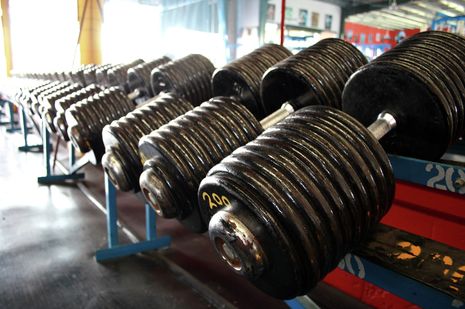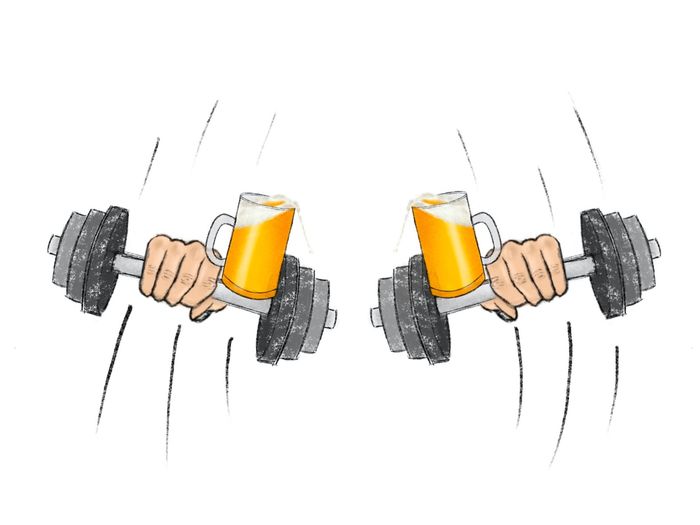The underrated art of bodybuilding
As the action of this year’s Olympia Weekend comes to an end, Zakariyya Ali explains how he fell in love with the sport, as well as touches on his own gym experience

Bodybuilding is a unique sport. Controversial, heavily criticised, and largely overlooked, but unique nonetheless. Indeed, a sport where athletes prepare for weeks, months, and years to simply stand on stage to pose for a few minutes is certainly a far cry from the ‘conventional’ world of competition. Yet, I truly believe that bodybuilding is one of the most underrated sports out there.
My earliest introduction to the world of bodybuilding was a result of my adoration for Arnold Schwarzenegger, not as the seven-time Mr. Olympia winner but as the Hollywood hero who dominated the silver screen as an imposing Terminator. It was not until I stepped foot in a gym for the first time that I began to truly appreciate the younger, admittedly larger and more muscular, bodybuilder Arnold. From initially struggling in the squat rack to religiously attending the gym on a near-daily basis, I began to binge watch the training videos of former Mr. Olympians such as Dorian Yates, Ronnie Coleman and, of course, Arnold himself.
At first taken aback by the outrageous physiques displayed by these individuals, I soon recognised the level of hardcore dedication that went into developing such figures; these individuals are voluntarily pushing their bodies to the utter limit of exhaustion and stress. Nonetheless, I eagerly sought to take inspiration from them in my quest to improve in the weight room. Whether I was listening attentively to Arnold’s tips on “pumping the bicep”, or screaming “YEAH BUDDY” in homage to the incredible feat that is Coleman, I suddenly fell in love with the sport of bodybuilding.
“Alongside the on-stage performance, what makes professional bodybuilding all the more impressive is the arduous preparation that goes into crafting an awe-inspiring physique”
Unfortunately, the dictionary definition of bodybuilding pencils in a rather vague and uninspiring explanation of the sport. Although defined as “involving strenuous physical exercise in order to strengthen and enlarge the muscles of the body”, there is certainly more to bodybuilding than this fairly dull picture. In fact, bodybuilding isn’t just about engaging in “strenuous physical exercise” to grow the muscles of the body, it’s also about developing a truly well-balanced physique that impresses, and even shocks, a panel of judges, who then score athletes on a mixture of artistic posing and level of muscularity. Subsequently, professional bodybuilding is divided into many sub-divisions and classes that determine how one is judged.
For instance, “Classic Physique” is a category that places heavy emphasis on symmetry, balance, and proportion; it’s not simply about accumulating as much muscle as humanly possible. On the other hand, “Open Division Bodybuilding” is just that. Once involving the likes of Yates and Coleman, Jay Cutler and his famous quad stomp, as well as current two-time Mr. Olympia Mamdouh “Big Ramy” Elssbiay, the open class invites the heaviest mass monsters from around the world to display their titan-like figures in a display of brute physicality.
Alongside the on-stage performance, what makes professional bodybuilding all the more impressive is the arduous preparation that goes into crafting an awe-inspiring physique. Yates was renowned for publicising his insane training sessions in his famous Blood and Guts documentary, shedding light on the strenuous task of preparing for the lucrative Olympia, which the British giant won six consecutive times.
“I first entered the gym with a goal of trying to lift more than my friends; now I train for no other reason than to be a better version of myself”
Record Mr. Olympia winner Coleman is also known for pushing himself to the absolute limits of human capacity. Despite being forced to undergo numerous surgeries over the course of his career, he’s not ashamed to admit deadlifting over 320kg just one week after a hip replacement. Likewise, with extreme weightlifting comes extreme dieting, as bodybuilders embark on the task of weight-cutting in order to enter single-digit body fat percentage. Coleman comes to mind once again, having reportedly reached 0.3% body fat through a strict diet that involved consuming 2.7kg of chicken a day.
Aside from the drastic dietary measures taken by such competitors, professional bodybuilding is notoriously known for its open, and often reckless, use of steroids. It comes as no surprise that those not familiar with the sport are reluctant to take interest, as a certain level of stigma will always detract from the view of bodybuilding as a sport worthy of serious recognition. A competition where you are inherently judged on your looks certainly lends to the opinion that it’s nothing more than an unhealthy vanity fair.
And yet, beyond the outward facade of controversy that characterises such an extreme sport, there exists a truly admirable exhibition that rewards both effort and individuality. Among many things such as hard work and resilience, the sport has fundamentally taught me the importance of self-acceptance. I first entered the gym with a goal of trying to lift more than my friends; now I train for no other reason than to be a better version of myself. I have neither the interest, nor the capacity, to look like these athletes, but I can treat every personal best as though I have won the Olympia.
In fact, in bodybuilding there exists a sport with a grassroots reach, where people like myself can train in a well-equipped gym for under £20 per month. Also, through local divisions such as the United Kingdom Drug Free Bodybuilding Association (UKDFBA), aspiring athletes from all strides, experiences, and walks of life have the competitive means to embark on a journey that is undoubtedly challenging but massively fruitful.
So, as we look back at another remarkable Olympia Weekend, perhaps now is the time to give professional bodybuilding the chance it deserves. Slowly but surely, the sport is beginning to gain warranted appreciation and support once again, as fitness brands such as Gymshark now sponsor the likes of three-peat Classic Physique Mr. Olympia Chris Bumstead and 2016 Bikini Olympia champion Courtney King. This is an ultimately positive sign for a sport that has so much to offer as a distinctive form of competitive entertainment, and which will inevitably regain the level of prominence it once saw back in the heydays of Arnold and Coleman. With the backing of a financially booming fitness clothing industry, the future of bodybuilding looks brighter than ever.
 Comment / Plastic pubs: the problem with Cambridge alehouses 5 January 2026
Comment / Plastic pubs: the problem with Cambridge alehouses 5 January 2026 News / SU stops offering student discounts8 January 2026
News / SU stops offering student discounts8 January 2026 News / Uni-linked firms rank among Cambridgeshire’s largest7 January 2026
News / Uni-linked firms rank among Cambridgeshire’s largest7 January 2026 News / New movement ‘Cambridge is Chopped’ launched to fight against hate crime7 January 2026
News / New movement ‘Cambridge is Chopped’ launched to fight against hate crime7 January 2026 News / Cambridge businesses concerned infrastructure delays will hurt growth5 January 2026
News / Cambridge businesses concerned infrastructure delays will hurt growth5 January 2026









